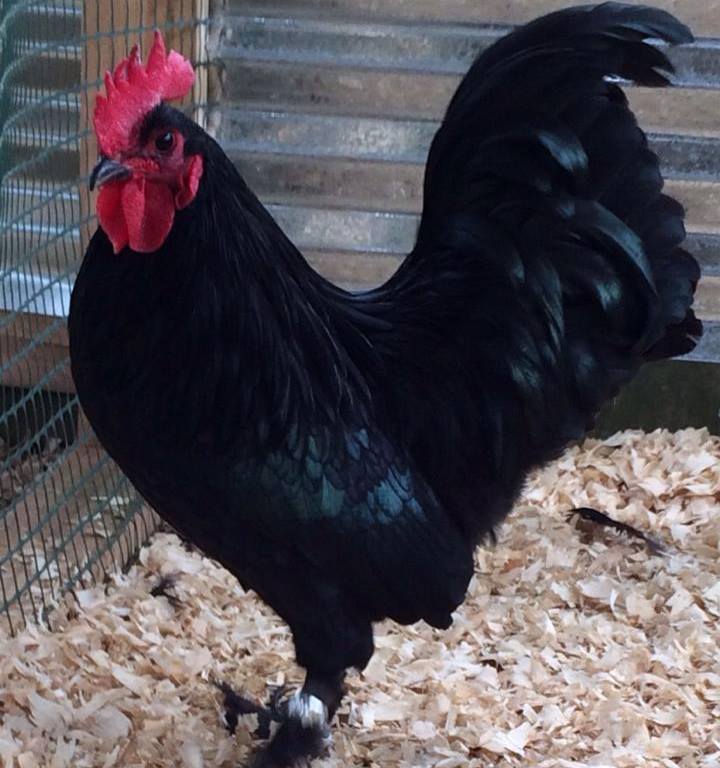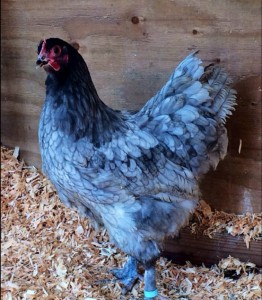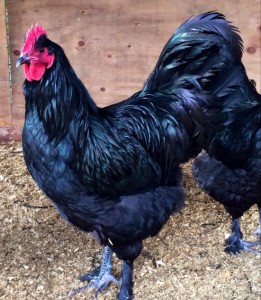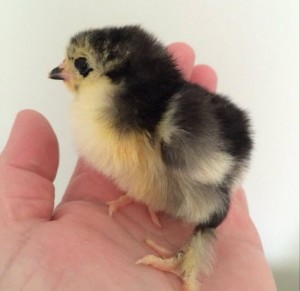UCP Episode 047 – Langshan Chickens: Matt Stillman Discusses this Ancient Chinese Secret?
Description
Question: How do you make the most strikingly beautiful, large, feather-legged, dark brown egg-laying chickens? Answer: Ancient Chinese Secret!
Langshan, Cochin and Brahma are the three breeds that comprise the entire Asiatic Class of chickens recognized by the American Poultry Association. All three of these originated in China and have been causing a stir in the western poultry world since the 1800s.
Today on the Urban Chicken Podcast, we are going to discuss at length the rarest of the Asiatic Class birds – the Langshan. Matt Stillman, a breeder of both standard and bantam Langshans and District One director of the American Langshan Club, joins me on the show to share the fascinating history and attributes of this marvelous Chinese chicken.
HISTORY OF THE LANGSHAN CHICKEN
Langshan chickens were the last of the three Chinese breeds to be brought to western world – first to England in 1872 and then later to the United States in 1878. Though it was Major F.T. Croad, who first imported the lovely Langshan chicken, it was his niece, Miss A.C. Croad, who worked tirelessly to establish the breed in Britain.
Almost immediately upon importation, a bitter dispute erupted between Cochin and Langshan enthusiasts. Many argued that the Langshan was merely a poor variety of the black Cochin. Breeders used the Langshan as stock to improve the black plumage coloring in the British Cochin lines at that time. Miss Croad and other Langshan supporters steadfastly maintained that the Langshan was a distinct breed separate from the Cochin.
Looking upon this debate now, it seems laughable that the tall, tight-feathered, athletic Langshan was once mistaken for a Cochin, which is a short, round-bodied, fluffy-feathered and less energetic breed. Truly, these two breeds are easily distinguishable.
Eventually, Langshans were accepted as a unique chicken breed in Britain and elsewhere. The original Langshan breed recognized in Britain is called the Croad Langshan, in honor of Croad family and to distinguish the breed from other Langshan varieties which were bred to accentuate different features. In Germany, the Langshan were bred for long, clean legs. This line became known as the “German Langshan.” In England, one group of breeders created the “Modern Langshan” breed which is similar to the German Langshan and has a body type akin to the Modern Game.
The Langshans in America are Croad Langshans – though we do not use the distinguishing name, Croad. There are three varieties of Langshans currently accepted in the A.P.A. Standard: Black, White and Blue. Black Langshans were admitted into the American standard in 1883 and the White Langshan followed ten years later in 1893. Interestingly, almost 100 years would past before the Blue Langshan was accepted in 1987.
ATTRIBUTES OF THE LANGSHAN
The original Langshan chickens were solid black with a brilliant green sheen to their plumage. They are the tallest, non-game breed – the average Langshan rooster stands between 24-36 inches in height. The breed is known for its long legs, which are lightly feathered under the American and Croad Langshan (British) standards. The leg feathering is found on the shank and outer toe of the breed.
Additionally, Langshans are full-breasted, deep bodied birds. Though a large breed with standard weights for cocks being 9 ½ lbs and hens 7 ½ lbs – Langshans are the smallest of the three breeds in the Asiatic Class. Their white skin and abundance of white meat qualify the breed as a good meat bird.
The Langshan is also renowned as a prolific layer. The average Langshan hen will typically produce about 150 eggs per year and lay during winter months as well. Consequently, Langshans are considerably better egg-layers than both the Cochin or Brahma breeds. The body size and generous egg-laying abilities of this breed make the Langshan a good dual-purpose bird for the small homesteader.
Langshan chickens are often attributed as laying a “plum” colored egg. This is not entirely accurate. The breed lays brown eggs, however the bloom on the egg can give it a somewhat purplish hue. It is noteworthy that prior to the introduction of the Langshan breed, richly brown colored eggs were a rarity in England.
Langshans are hardy birds that tolerate both hot and cold climates well. The breed is known for its gentle but athletic nature – distinguishing it from the more lethargic Cochin and Brahma breeds. Enthusiasts for the breed often describe Langshans as “intelligent” birds – being inquisitive, soci











